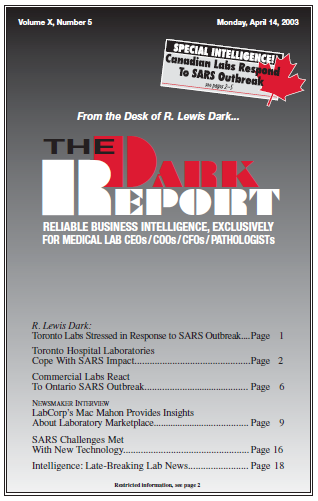CEO SUMMARY: Pathologists will be particularly interested in what Thomas MacMahon has to say about the evolution of laboratory medicine. As Chairman, President, and CEO of Laboratory Corporation of America Holdings, he has continuous access to some of the best strategic analysis about the laboratory testing marketplace and its evolution. MacMahon has several surprising predictions […]
To access this post, you must purchase The Dark Report.


